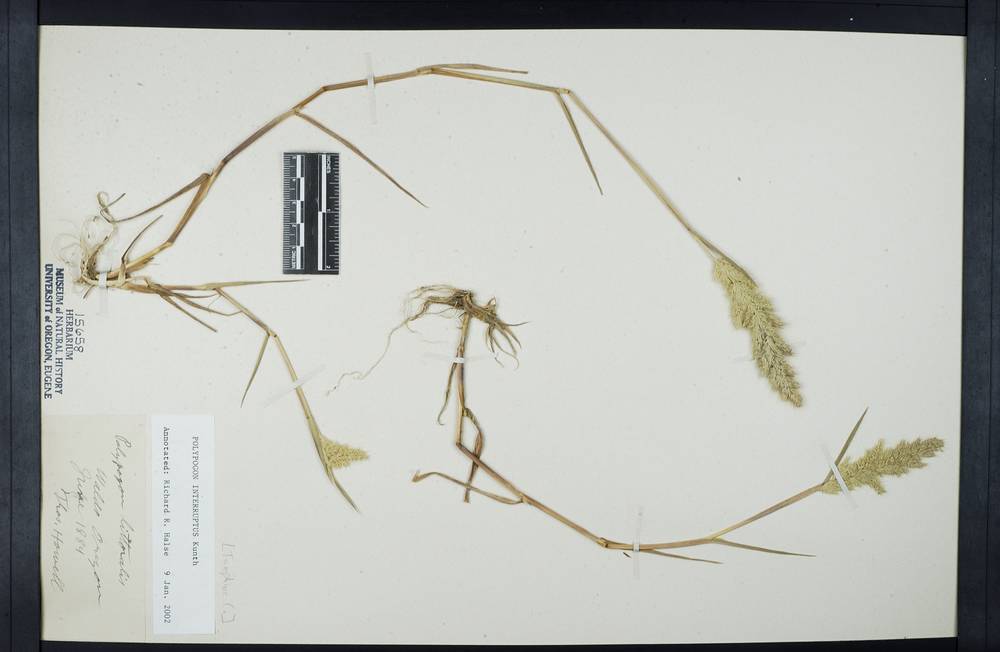
Plants perennial, often flowering the first year, 20–80(90) cm tall.
Leaves sheaths smooth; ligules 2–6 mm; blades 5–9 cm × 3–6 mm.
Inflorescences usually interrupted or lobed, 3–15 × 0.5–3 cm; pedicels not developed; stipes 0.2–0.7 mm.
Glumes 2–3 mm, scabrous, larger prickles extending up the keel beyond mid-length; glumes not tapering to the tips; tips acute to truncate, unlobed or the lobes to 0.1 mm, awned; glume awns 1.5–3.2 mm.
Lemmas 0.8– 1.5 mm, glabrous, smooth; tips obtuse, not emarginate, awned; lemma awns 1–3.2 mm.
Anthers 0.5–0.7 mm.
2n=42.
Wet, often disturbed sites. 0–500m. Est, Sisk, WV. CA, ID, NV, WA; east to NE, southeast to LA, south to South America; NY, WI. Native.
Polypogon interruptus has a lobed inflorescence somewhat like a sparse P. monspeliensis but with shorter awns. A similar grass, P. fugax, was collected in Portland in 1902 and 1916. It is an annual with leaves 2–11 mm wide. Its glume tips are acute to rounded and have lobes 0.1–0.2 mm. Its lemma awns are up to 2 mm.